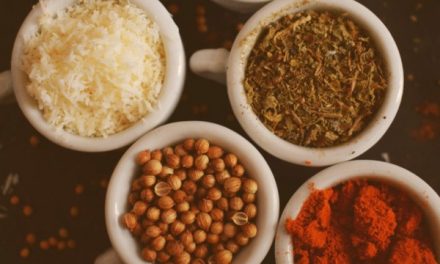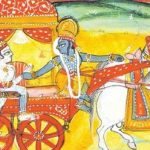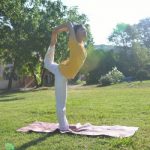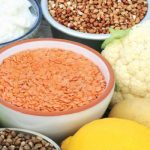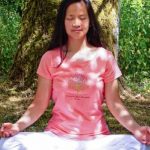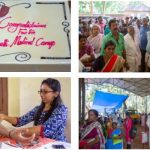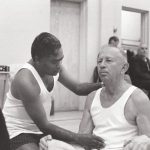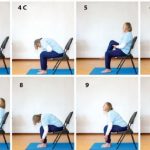 Practical Ayurveda
Practical Ayurveda
by Chandrika
Ayurveda, the science of life, is thousands of years old and has a vast knowledge of healthy living and treatment of disease. It is also a living science; its ancient wisdom has grown and expanded beyond India – its place of origin – into the modern western world where it is much appreciated as a key to the art of healthy living.
Ayurveda is deeply rooted in philosophy and thus a practical system with a holistic perspective: Man is seen as a being whose body, mind and consciousness are one. Its focus not only on health but on overall well-being has greatly contributed to its growing popularity. With this book we hope to give you a thorough under – standing of how Ayurveda can help you live a healthy life and how to best apply its principles to your personal situation.
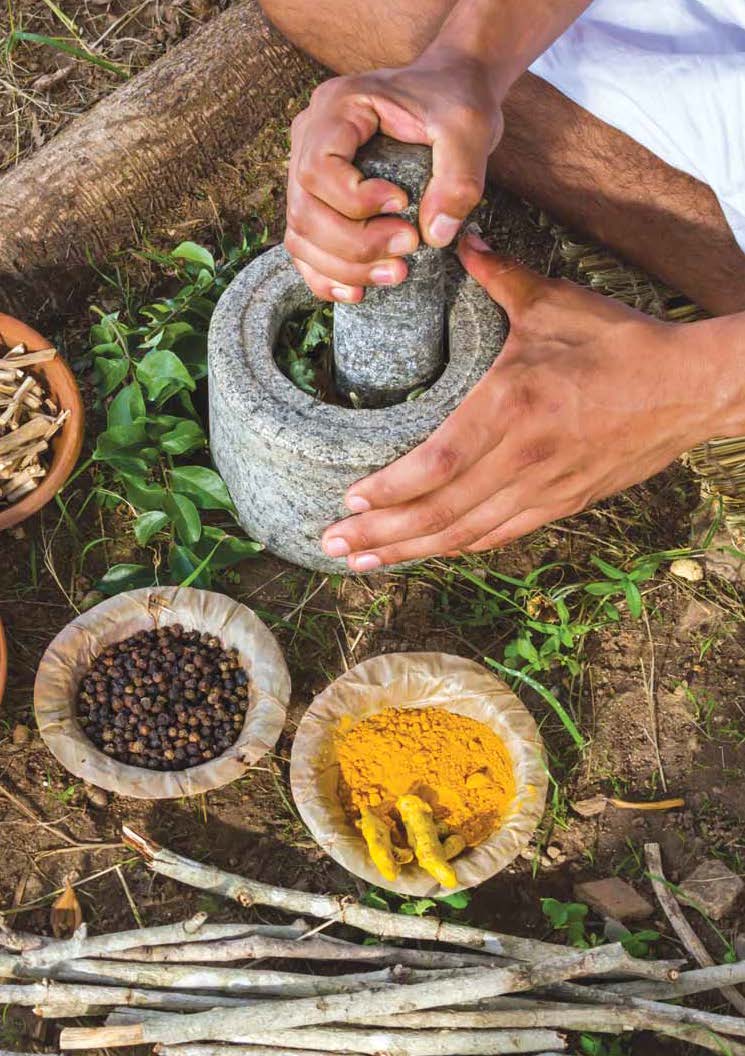 Swami Sivananda expresses the importance of Ayurveda in his book: Practice of Ayurveda :
Swami Sivananda expresses the importance of Ayurveda in his book: Practice of Ayurveda :
“This tendency of an essentially intuitive mind, towards an integral development of life, towards a complete blossoming of the whole man even while living in a physical form in this material world; this impassioned affirmation of positive living, this acceptance of the body as the best instrument for the realization here on earth, resulted in the obtainment of the yet unmatched, deepest insights – the subtle determining vital powers and secrets in the human system that govern its radiant health and longevity and in the creation of a yet another Veda, the Ayurveda.
Ayurveda is a perfect science of life and consists of a body of most remarkable knowledge on the internal mechanism of human health and longevity, on medicinal herbs and therapeutic roots, on the efficacious treatment of human ills by eradicating from the human system the very sources of their causation.”
The term Ayurveda comes from “Ayus” = life and veda = knowledge.
“Mind, self (consciousness) and body – these three make the tripod on which the living world stands.” Caraka Samhita Sutrasthana Chapter 1 Verse 46
Source of knowledge
Ayurveda is a complete medical system with an extensive knowledge of anatomy, physiology and pharmacology. Originally passed on in oral tradition, the body of knowledge of Ayurveda has been recorded in these main classical scriptures, as well as several minor scriptures, all made accessible to us by commen – taries of modern day scholars:
Charaka Samhita by Charaka
Sushruta Samhita by Sushruta
Ashtanga Samgraha and Ashtanga Hrdayam by Vagbhata
“Ayurveda is the knowledge of a happy and unhappy, and a good and bad life and that which contributes to these four aspects.” – Caraka Samhita Sutrasthana Chapter 1 Verse 41
Ayurveda and Yoga
Ayurveda and Yoga are sister sciences and this is how they are practiced in the Sivananda Yoga Centers. While both Ayurveda and Yoga share the 4 goals of life of classical Indian philosophy: dharma (right way of living), artha (prosperity), kama (fulfillment of desires) and moksha (liberation, self-realisation), Ayurveda focuses on health for achieving the 4 goals, whereas the ultimate aim of Yoga is moksha.
Throughout this book we introduce the main aspects of Ayurveda and how to practice them in your daily life.
The three doshas
Vata, pitta and kapha are energies that pervade the body and mind and are responsible for performing the functions of body and mind. They are made up of the five elements and play a central role in our body, our health and disease and we experience them by their effects on our anatomy and physiology.
Vata is the force of movement, dynamic activity and sensation in body and mind. This makes it the most important of the three doshas.
Pitta is the principle of transformation including digestion, produces colour and radiance and is the source of all internal heat.
Kapha gives the body its substance, strength, cohesion and lubrication and cools the body. It is responsible for healing and regeneration and greatly contributes to immunity.
Constitution – Prakriti
All three doshas are a part of us and our constitution – in Sanskrit Prakriti – is determined by how much of each dosha we have received at conception. Most commonly two doshas are predominant, giving you a vata-pitta, pitta-kapha or a vata-kapha constitution. More rarely for some people all three doshas play an equal role in their constitution: a tridosha constitution and even more rarely one dosha is predominant.
Our body structure – Dhatus and Malas
In ayurvedic understanding the body has seven types of tissues, called dhatus (such as blood, fat tissue, and bone), and three main waste products (urine, stool and sweat), called malas. Together with the doshas the dhatus, malas and agni are vital for health and immunity. They are tightly linked and their health and function depend on each other.
Ojas
Ojas is created as an end product of dhatu (tissue) formation. It is a special substance that maintains and sustains life and is one of our main aspects responsible for immunity. It protects the tissues against the damaging influence of the doshas. Because it comes from the tissues, ojas s is dependent on their health and also a well-functioning agni.
An increase of ojas makes you blissful. Ojas can never be too much. Loss of ojas due to stress, ill health and lack of ojas production expresses itself in fearfulness and fiery anger.
Agni
Agni means fire and refers to the digestive fire in the body. It is essential for all processes of transformation. Maintaining a strong agni is one of the central principles of Ayurveda besides keeping the doshas in balance. Agni is at the heart of all internal processes of the body, in other words: your metabolism. Nowadays taking good care of agni may well be our most important task, because most aspects of our lifestyle weaken agni. Ayurveda teaches us the lost art of keeping agni strong and healthy and restoring the function of a compromised agni.
A weak agni leads to formation of ama, which is undigested food and acts like a toxin, build-up of excess and weakened tissues (dhatus), resulting in lack of energy and blockage of our internal plumbing – particularly the digestive tract and the arteries. Weak tissues are susceptible to the damaging influence of agitated and increased doshas and can no longer provide the body with adequate ojas. Left untreated, this leads to disease and aging.
Many yoga postures contribute to a strong and healthy agni.
“The practice of head and shoulderstand restores the equilibrium of ojas and perfect health.” – Swami Sivananda.
Immunity is called bala, strength, in Ayurveda and exists in three forms:
- The immunity from the amount of ojas we are born with. It is strongest between the ages 20 to 50.
- Immunity which is dependent on age and seasonal changes
- Immunity in the form of healthy ojas, agni, doshas and tissues which we can build up and maintain with proper diet, exercise and rejuvenating treatments.
Health
Health is a positive state of happiness due to the normal condition of the doshas, agni, dhatus, malas, as well as a serene state of the body, mind and senses. For our busy and often unsettled modern life Ayurveda provides a solid foun – dation of health with its time-tested wisdom on healthy living.
The ayurvedic lifestyle is adapted to your phase of life, the season, your environment and takes into account your constitution. It includes your thoughts, your speech and your actions. In practice this means following a daily routine, being aware of seasonal changes and adjusting your lifestyle to your age.
The most important principles of Ayurveda for a healthy, balanced life are:
- Regularity in daily life – your daily habits have the most influence on your health.
- Tuning in to the laws and rhythms of nature.
- Moderation in everything you do.
Following a healthy lifestyle
How to change your life? Ayurveda has advice on virtually all aspects of life and knows that in order for change to stick, it has to be introduced slowly and gradually. Persevere; regularity and moderation are the key. Do not overdo new things. Habits need to grow slowly but surely. We have included a step by step guide for a healthy lifestyle in the book to help you with this important goal.
Adopting a healthy lifestyle
This means following the daily natural rhythm, rules of hygiene, getting enough and appropriate exercise, practicing yoga and meditation and repeating mantras to develop sattva, beneficial use of the senses, spending time in nature and with like – minded, positive people, helping others and avoiding extremes in everything you do.
Daily routine
The body and mind follow an internal clock – a cycle of 24 hours. Throughout different times of the day the doshas change in predominance and with them their influence on you. By adapting your daily routine to these phases you are keeping the doshas well balanced, ensuring their optimal function.
Regularity in your routine is essential. Getting up, eating and going to sleep at the same time each day provides the ideal framework for a healthy life and a day full of energy.
Strengthen your agni
- By only eating when you are hungry, always eating at the same time each day and adhering to a light and easily digestible diet. Avoid completely filling your stomach and practice regular fasting for just a day or even half a day. Only drink hot or warm water, avoid cold or ice-cold water completely.
- By avoiding stress as much as possible. In times of stress only take a light diet or do a fast.
“The secret of being healthy and happy at all times is to be a little hungry all the time.” – Swami Sivananda
Increase ojas
We are born with a certain amount of ojas but can also produce it. Avoiding stress, keeping a strong agni and regular exercise and proper diet are the key. Milk, almonds, almond milk and ghee are the best sources of ojas. Milk nourishes all seven tissues and will go where it is most needed. A weak agni or the presence of ama need to be corrected first, otherwise milk or ghee cannot be digested and will further weaken agni.
Diet
Nutrition is called “the great medicine” in Ayurveda. Food not only makes up the body but also the mind. A wholesome, well-balanced diet is the foundation of health, strength and happiness and the key for healing any disease. Moreover: your food should be appetising and to your liking and appeal to all your senses.
A well-balanced diet consists of:
- Two thirds nourishing foods: grains, fruit, vegetables that are rich in starch, milk and milk products – alternatively rice or almond milk, nuts, and fats.
- And one third purifying foods: pulses, vegetables and salad.
Changing your diet
Any change should be made gradually. Introduce healthy foods and reduce unwholesome foods slowly and step by step. With practice you will find the diet best suited to your taste and constitution.
The healing power of food
The healing power of food comes from these 8 principles:
- Good quality food (organic and fresh).
- Preparation (freshly coooked).
- Food Combinations: Avoid combinations such as very cold and very hot things together, milk with fruit.
- Not eating too much nor too little.
- Regional foods are best and freshest.
- The season, the time of day, your phase of life all tell you which foods are best for you.
- The atmosphere, the state of your kitchen, and your attitude all play an important role.
- You, the person who eats, is more important than what you eat. The healthiest food can become poison if you are in a hurry, stressed or unhappy; have a weak agni or are ill.
Sugar
It is classically made from cane sugar and comes in different forms. The two most commonly used forms today are jaggery and sharkara.
Jaggery is thickened and solidified cane sugar syrup and still contains many bioactive phytochemicals.
In ancient times sugar was far less available than today and was used as medicine rather than as an everyday food. According to Ayurveda it soothes vata and pitta and increases kapha, produces mucous, and can lead to asthma. With very moderate consumption sharkara only mildly increases kapha, acts as a diuretic, purifies the blood, soothes burning sensations, quenches thirst and is beneficial for the eyes.
“If you strive for bliss, your diet should be such that new disease cannot manifest and existing disease is alleviated.” – Caraka
Ayurveda and disease
Out of balance
Most commonly the road to ill health begins with a lapse in judgement, when our mind and self-control fail us. Even though we know better, we frequently choose to make unhealthy choices, most often in pursuit of sense-pleasures.
Swami Sivananda points out these pitfalls of daily life:
- Overloading the stomach upsets digestion and weakens agni.
- Sleeping during the day and being awake at night interferes with our natural rhythm and stresses the nervous system.
- Suppressing natural urges like passing stool, urine and gas, the urge to yawn, sleep, or cry tears taxes the body and mind and aggravates vata.
- Sexual excess distresses the nervous system.
In Ayurveda unspecific feelings of unease or non-wellbeing are taken seriously – they are the vanguards of manifest disease. An irritated dosha for instance – if not pacified – will lead to dosha increase, the dosha leaving its seat and settling in the affected tissue. Only at this point do we usually do something about it and in ayurvedic terms this is already very late. Ideally a disease is caught and the process reversed before it manifests. It is therefore essential to follow a healthy lifestyle to keep the doshas in balance and to pay attention to signs of irritated doshas such as a headache or minor aches and pains.
Ayurvedic Therapies
The scope of Ayurveda goes far beyond wellness, its main focus is maintaining health, correcting imbalance and curing disease. There is a wide array of ayurvedic therapies that have one thing in common: they place responsibility with you, the patient. You are the caretaker of your body and mind and your own best doctor. The key to a cure is avoiding the cause of disease and non-wellbeing.
Corrective and restorative therapies
These treatments aim at pacifying the doshas, stimulating agni, digest ama, restoring health to the tissues and building ojas. However, if you stop here and keep the habits that led to your problem, it will recur.
The main aspects are:
- A special diet to reduce the increased dosha(s), stimulate agni and digest ama. Fasting or a nourishing diet is part of this where necessary.
- Medicinal herbs, plants and minerals.
- Body treatments, like oil massage or a steam bath.
- Panchakarma means “five actions”. It is the cleansing of the body and removal of elevated doshas. While irritated doshas can be pacified with body or herbal treatments, elevated doshas are best removed from the body with panchakarma. It is an elaborate therapy including oil massages, purgation, enemas, and more and it is not to be confused with a spa or wellness treatment.
Panchakarma has a deep cleansing effect, it restores energy, opens blockages, cleanses tissues, rejuvenates the whole system and restores the natural balance of the doshas. Its effects can be felt for a year or longer if the proper diet and lifestyle advice is followed. These are the practical aspects of Ayurveda and an ayurvedic lifestyle discussed in the book which will guide you through living a more positive and healthy life step by step.
“The science of Ayurveda points to the soul through the upkeep of the physical body in perfect order. It is the science of sciences” – Swami Sivananda
 Chandrika is a medical doctor and a Sivananda Yoga Teacher. She teaches anatomy and physiology in the Sivananda Yoga Teachers’ Training Courses in Europe. She co-authored the new book Practical Ayurveda, (Dorling Kindersley).
Chandrika is a medical doctor and a Sivananda Yoga Teacher. She teaches anatomy and physiology in the Sivananda Yoga Teachers’ Training Courses in Europe. She co-authored the new book Practical Ayurveda, (Dorling Kindersley).


